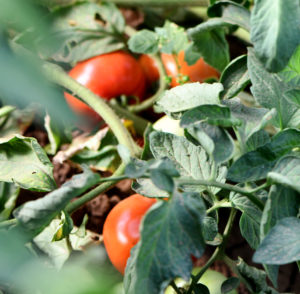Vegetable production budgets available for High Plains growers
Writer: Kay Ledbetter, 806-677-5608, skledbetter@ag.tamu.edu
Contact: Justin Benavidez, 806-677-5600, benavidezjustin@tamu.edu

AMARILLO – Gardeners and commercial producers with an extra acre in their backyard or pivot circle corner can “pencil out” vegetable production with more confidence, thanks to a Texas A&M AgriLife and West Texas A&M University collaborative project.
The vegetable production budgets are available at https://tinyurl.com/D1vegetablebudget, then click on “spreadsheet budgets.” The site also includes help files for those unfamiliar with using the spreadsheets.
Budgets are available for an acre of jalapenos and tomatoes in the Texas High Plains and show a comparison under drip-irrigation and with and without the use of plastic mulch.
“This is an important new resource for the residents of the Texas High Plains who might be looking for alternatives to the traditional portfolio of row crops in the area,” said Dr. Justin Benavidez, Texas A&M AgriLife Extension Service economist, Amarillo.

“As water continues to constrain production in areas of Texas, finding crops that provide a higher return per unit of water available will give producers, large and small, more flexibility when considering options.”
Benavidez said while tomatoes and jalapenos are the vegetables featured, these budgets can also serve as a template for other vegetable production. Users can plug in their seed costs or transplant costs per crop, cost for inputs like fertilizer and herbicide, and the price they expect to receive per pound to determine if a particular crop is profitable.
The example budget for outdoor drip-irrigated tomatoes shows a profit of a little over $2,000 an acre, he said. However, because no two operations are the same, the inputs and costs will change for each location. These budgets will help determine where the breakeven point will be on individual operations.
The project also included a survey of traditional and alternative markets that indicated possibilities for local growth and sales of salad greens, okra, strawberries, spinach, pumpkins and squash.
“These budgets are not only tools for those already growing crops, they can also serve as a resource for someone who is considering smaller-scale production targeted at a farmers market or even a partnership with a local restaurant,” he said.
Benavidez said even someone not interested in selling their produce can use the budget as a starting point to compare the costs of growing vegetables for themselves with buying them in the market.
While a full-acre garden would be a significant undertaking for most home gardeners, he said the budgets can be scaled down appropriately since the price per unit of input is included.


